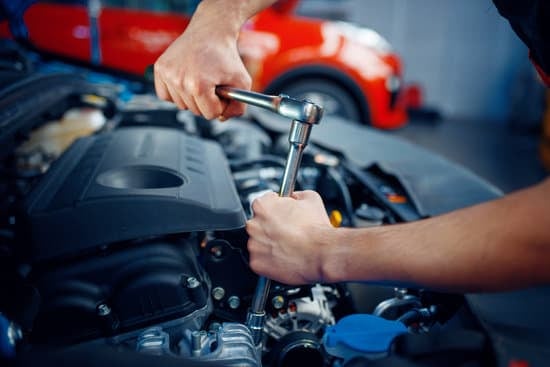5.The Importance of Regular Vehicle Maintenance for Safer Driving and Lower Insurance

Maintaining a vehicle is crucial for ensuring both the safety of its occupants and the smooth functioning of the vehicle. Regular vehicle maintenance is not just about keeping your car running—it directly affects your driving experience, fuel efficiency, and safety. Additionally, proper maintenance can have a significant impact on your car insurance premiums. Many drivers overlook the importance of routine maintenance, focusing only on the immediate costs or neglecting maintenance due to a busy schedule. However, regular maintenance can save you money, improve your car’s lifespan, and enhance your safety on the road.
In this article, we will delve into the various aspects of vehicle maintenance, its direct connection to driving safety, and how it can potentially reduce your auto insurance premiums. By understanding the relationship between maintenance and insurance, you can make informed decisions to not only keep your vehicle in good condition but also take advantage of potential insurance savings.
The Relationship Between Vehicle Maintenance and Safe Driving
1. Preventing Accidents with Proper Maintenance
Accidents can happen at any time, but many accidents are preventable with proper vehicle maintenance. Your car is a complex machine with hundreds of moving parts, from brakes and tires to the engine and transmission. If any of these parts are not maintained properly, the likelihood of accidents increases. A worn-out brake system, underinflated tires, or low fluid levels can significantly compromise your vehicle’s ability to operate as expected, leading to dangerous situations on the road.
Key Points:
- Worn-out tires or brake pads can lead to longer stopping distances.
- Low fluid levels can cause engine failure or overheating.
- Regular tire checks and fluid changes can prevent malfunction during critical moments.
For example, a car with improperly maintained tires is more likely to experience blowouts or loss of control, especially in adverse weather conditions. Similarly, a malfunctioning brake system can prevent a driver from stopping in time to avoid a collision. Ensuring that the brakes, tires, suspension, and other safety components are well-maintained significantly reduces the risk of accidents, thereby keeping everyone safer on the road.
2. Improving Vehicle Performance and Handling
Regular maintenance doesn’t just ensure that your car is safe—it also ensures that it performs optimally. A well-maintained vehicle offers better handling, faster acceleration, and smoother operation. This can be particularly important in emergency situations, where quick responses and precise control can make the difference between avoiding an accident and becoming involved in one.
Key Points:
- A properly maintained engine ensures smooth acceleration and better fuel efficiency.
- Regular oil changes prevent engine wear, improving overall performance.
- Suspension and steering components help maintain vehicle stability.
By ensuring that your engine, suspension, and steering components are in good condition, you can ensure a safer and more responsive driving experience. Regular oil changes and tire rotations keep the vehicle running efficiently, while timely inspection of the suspension and brakes keeps the car steady on the road.
3. Avoiding Unexpected Breakdowns
Nothing is more dangerous than a sudden breakdown, especially when you’re driving on the highway or in challenging conditions. Regular maintenance helps identify potential issues early on, preventing breakdowns that could leave you stranded or in harm’s way. A regular inspection of key components such as the battery, alternator, and cooling system can help avoid situations where a malfunction leaves you vulnerable on the road.
Key Points:
- Timely battery checks and alternator inspections reduce the risk of failure.
- Preventative maintenance avoids unexpected mechanical failures.
- A breakdown on the road could expose you to potential accidents.
When you stay on top of regular maintenance, you catch small problems before they turn into costly, dangerous issues. For instance, a dead battery can leave you stranded at an inconvenient time, while a faulty alternator could cause your vehicle to lose power while driving, leading to accidents. Regular maintenance helps mitigate these risks and ensures your car is always ready for the road.
The Link Between Vehicle Maintenance and Lower Insurance Premiums
1. Insurance Discounts for Well-Maintained Vehicles
Insurance companies recognize the connection between a well-maintained vehicle and a lower risk of accidents. Many insurers offer discounts or reduced premiums for vehicles that have undergone regular maintenance. This is especially true for certain safety features such as anti-lock brakes (ABS), airbags, traction control, and lane-departure warnings. If your vehicle has these features in working order, your insurance provider may reward you with a lower premium.
Key Points:
- Insurance companies offer discounts for cars with safety features in good working condition.
- Cars with fewer repair claims are seen as lower-risk by insurers.
- Maintaining your vehicle can demonstrate responsibility, which insurers often reward.
A car that is well-maintained is seen as lower-risk by insurers. If your car is less likely to break down or be involved in an accident, the insurer may charge you less for coverage. Regular maintenance helps ensure that your car remains eligible for these discounts, which can lead to significant savings over time.
2. Lower Risk of Claims and Higher Retention Rates
Insurance companies are in the business of managing risk. Vehicles that are well-maintained and in good condition are less likely to require expensive claims for repairs, especially when compared to vehicles that have been neglected or poorly maintained. Insurers typically base their rates on the historical risk associated with a particular vehicle, including its likelihood of breakdowns and accidents. A car that is regularly maintained has a lower risk of requiring costly claims, which makes it a more attractive prospect for insurers.
Key Points:
- Lower risk of accidents and breakdowns can result in fewer claims.
- Insurers offer better rates to cars that demonstrate lower-risk behavior.
- Car maintenance reduces long-term repair costs, which affects overall claims history.
Vehicles that have a history of fewer claims and fewer repairs are seen as more reliable, and this can result in lower insurance premiums. By maintaining your car regularly, you can minimize the likelihood of costly claims, leading to long-term savings on your insurance premiums.
3. Improved Safety Features Lead to Reduced Liability Coverage
When your vehicle’s safety features are properly maintained, such as airbags, traction control, and antilock braking systems, it reduces the likelihood of serious injuries in the event of an accident. As a result, insurance companies may lower your liability coverage costs since the chances of high-cost injuries are reduced with functional safety features.
Key Points:
- Proper maintenance of airbags, ABS, and traction control systems helps prevent injuries.
- Cars with better safety features often qualify for lower liability insurance rates.
- Functional safety systems lead to fewer expensive medical claims.
For example, a car equipped with functional airbags and anti-lock brakes is less likely to cause serious injury during an accident. Insurers know that vehicles with such features tend to result in fewer and less severe injury claims, so they offer more favorable liability coverage rates for these vehicles.
4. The Impact of Regular Maintenance on Collision Coverage
Collision coverage insures your car against damage caused by accidents, regardless of fault. A well-maintained vehicle is less likely to be involved in accidents, meaning that collision claims are less frequent. Furthermore, regular maintenance helps ensure that your vehicle’s systems—such as steering, brakes, and suspension—are functioning optimally, reducing the chance of losing control and being involved in a collision.
Key Points:
- Regularly maintained vehicles are less likely to be involved in accidents.
- Fewer collisions mean fewer claims under collision coverage.
- Well-maintained safety systems reduce the risk of accidents and reduce premiums.
By minimizing the risk of collision through regular maintenance, you not only reduce the chance of a costly accident but also make your car more insurable at a lower cost. Regular checks of tires, brakes, and suspension systems are essential to ensure that your vehicle remains stable and in control.
Key Aspects of Vehicle Maintenance
1. Tires and Brakes
- Tires: Keeping tires properly inflated and in good condition is essential for vehicle safety. Underinflated tires can lead to poor traction, longer stopping distances, and blowouts. Regularly checking tire tread and pressure can significantly reduce the chances of accidents.
- Brakes: The brake system is crucial to stopping your car safely in emergency situations. Worn-out brake pads or low brake fluid can result in reduced braking efficiency, increasing the risk of accidents. Regular brake inspections can ensure that the system works properly.
2. Engine and Fluid Checks
- Oil Changes: Regular oil changes keep the engine running smoothly and reduce wear and tear. Fresh oil helps reduce friction between engine components, preventing breakdowns and enhancing performance.
- Fluid Levels: Checking coolant, transmission, brake, and power steering fluids regularly is crucial for preventing engine failure or overheating, which can lead to dangerous breakdowns.
3. Battery and Electrical System
- Battery Checks: A well-maintained battery is essential for ensuring that your vehicle starts without issues. Periodic checks for corrosion and battery charge levels can prevent starting issues, especially in extreme temperatures.
4. Lights and Indicators
- Lights: Regularly inspect headlights, taillights, and turn signals to ensure they are functioning properly. Proper visibility is crucial for night driving and adverse weather conditions.
Conclusion
Regular vehicle maintenance is not just about keeping your car running smoothly—it directly impacts both your safety on the road and your car insurance premiums. Maintaining key components such as brakes, tires, engine, and safety systems helps prevent accidents, improves performance, and reduces the likelihood of costly claims. Additionally, properly maintaining your car can lower your insurance premiums by reducing the risks associated with accidents, breakdowns, and injuries.
By investing in regular vehicle maintenance, you are not only ensuring the safety of your car and its occupants but also maximizing your chances of receiving lower insurance premiums. Whether you’re looking to reduce costs, improve vehicle performance, or enhance safety, a well-maintained vehicle is an essential part of responsible driving and responsible insurance management.



